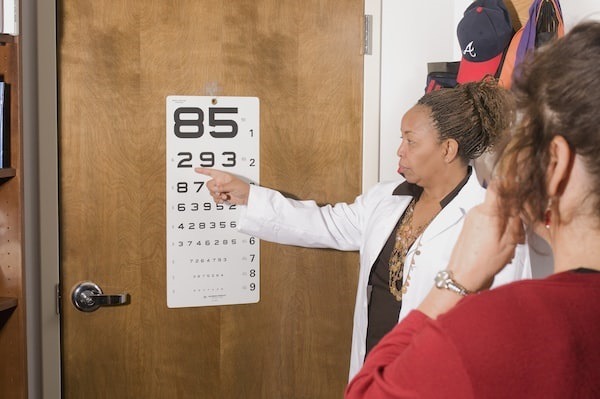An eye exam is an important health check-up that can provide valuable insight into your overall well-being. From detecting vision problems to uncovering signs of underlying disease, an eye exam can provide a wealth of information about your health. Keep reading to find out what you can learn from an eye exam.
Vision Problems
An eye exam is an important part of maintaining your eye health and can detect a variety of eye problems. During an eye exam, your optometrist will use a variety of tests to check your vision, eye movement, and refractive error. They will also check the health of the structures of your eye, including the cornea, retina, and optic nerve. The most common test used to assess vision is a refraction test. This test measures how well your eye focuses light and how well you can see from a distance. Your optometrist will use a phoropter to determine your prescription for corrective lenses. They may also use a retinoscope, which is a handheld device that helps them measure your glasses prescription. Your optometrist may also use a visual acuity test to measure your sharpness of vision. This test involves reading a chart of letters, numbers, and symbols of varying sizes. You will be asked to read the chart from a certain distance and your optometrist will use the results to determine your vision.
Glaucoma
Glaucoma is an eye disease that affects the optic nerve, which carries visual information from the eye to the brain. It is one of the leading causes of blindness and can cause permanent vision loss if left untreated. During a routine eye exam, your doctor will check for signs of glaucoma. This includes measuring the pressure inside the eye and examining the shape and health of the optic nerve. Your doctor may also measure the thickness of the cornea, which is the clear, dome-shaped layer of tissue that covers the front of the eye. A thinning of the cornea can be an early sign of glaucoma.
Diabetes
In order to detect diabetes, an eye exam is one of the most important screenings that can be done. During an eye exam, the doctor will check for any signs of diabetes in the eyes. The most common sign of diabetes is an increase in the amount of fluid in the eye, which can cause the eyes to appear cloudy or hazy. This is a sign of diabetic retinopathy, a condition caused by damage to the blood vessels of the retina.
Nutritional Deficiencies
When it comes to maintaining good health, nutrition is often the first thing that comes to mind. But did you know that an eye exam can also detect nutritional deficiencies? In fact, the eyes are often the first organ to show signs of an underlying nutrient deficiency, which is why it is important to get regular eye exams. Nutritional deficiencies can cause a variety of eye issues, including poor vision, dry eyes, and redness. A comprehensive eye exam can detect these issues and help determine the underlying cause. During an eye exam, the optometrist will look for signs of nutrient deficiency, such as changes to the eyes’ shape, color, or overall health. They may also check for signs of inflammation or other indicators of a potential deficiency.
Overall, an eye exam is a critical component of maintaining good health and vision. It can detect vision problems early and help people to get the treatment they need to maintain or improve their vision. An eye exam can also detect potential health issues and act as a window for early detection and prevention. Altogether, an eye exam is an important part of staying healthy and seeing clearly.


